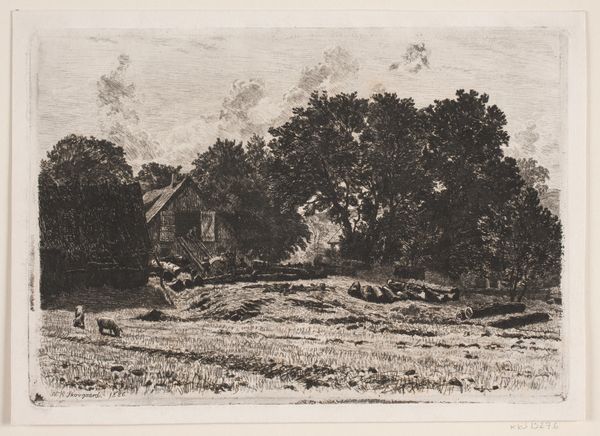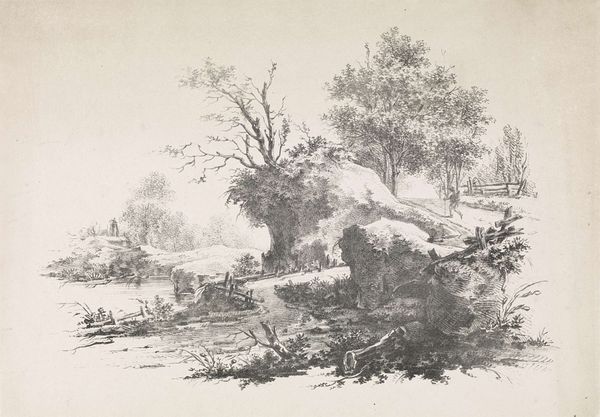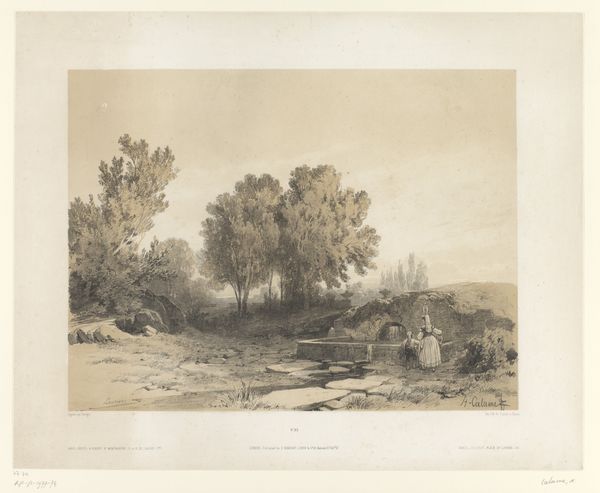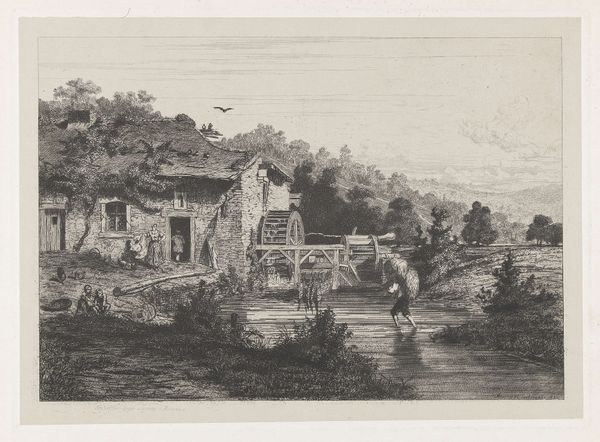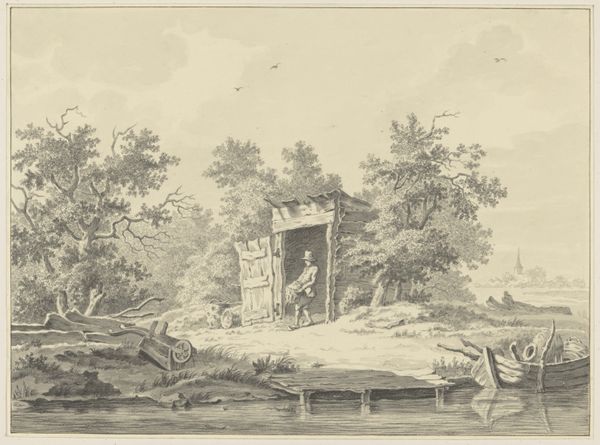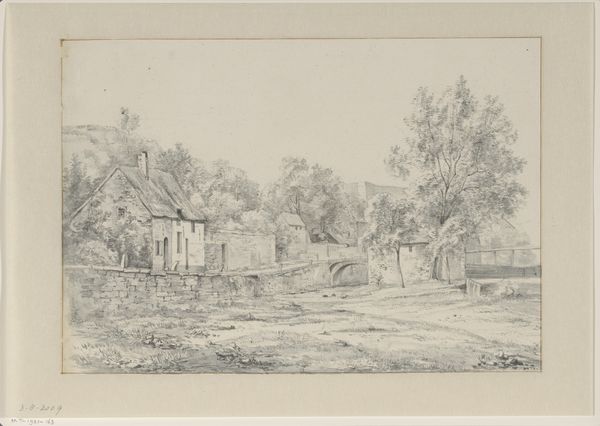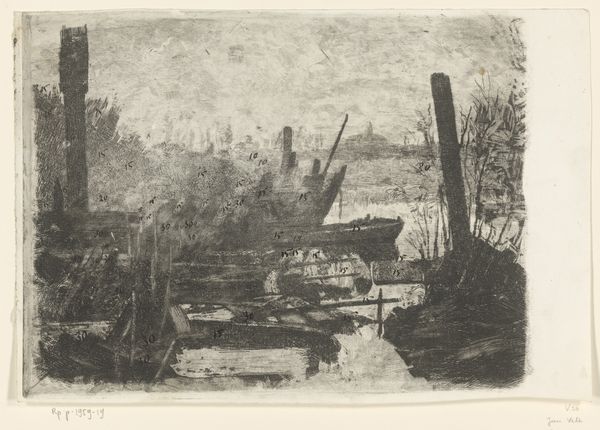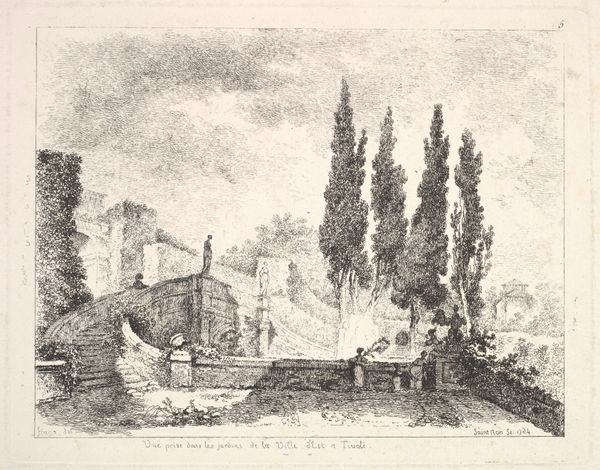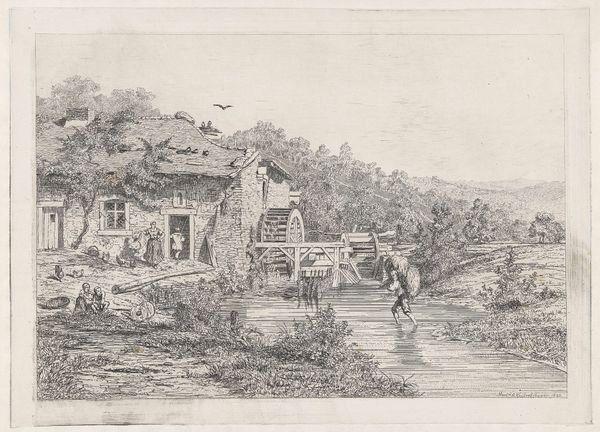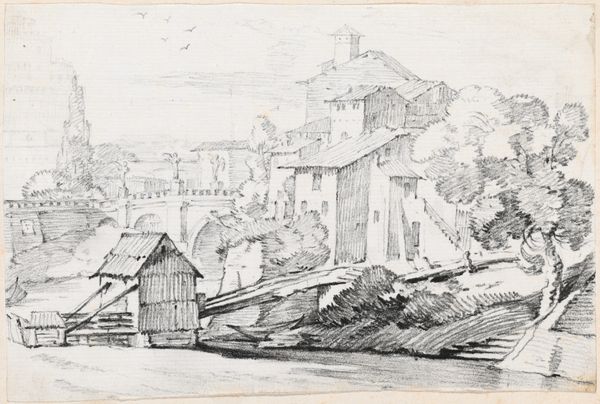
drawing, ink
#
drawing
#
neoclacissism
#
landscape
#
ink
#
line
#
cityscape
#
realism
Dimensions: overall: 18.9 x 25.1 cm (7 7/16 x 9 7/8 in.)
Copyright: National Gallery of Art: CC0 1.0
Curator: Welcome. We're standing before "A Country Road across an Ancient Bridge" by Jean Jacques de Boissieu, an ink drawing. What strikes you first? Editor: Decay, perhaps? The bridge seems both sturdy and fragile, old but actively used. I wonder about the labor required to maintain a structure like this, to coax permanence out of earth and water. Curator: Indeed. Note how Boissieu orchestrates line and tone to build this feeling. See the intricate, almost obsessive detail in rendering the crumbling stonework. He utilizes realism in depicting the setting and figures within the landscape and blends that approach into his cityscape scene. The lines articulate every crevice, inviting a semiotic reading of age and persistence. Editor: And the people almost blend into the bridge itself, mere adornments of stone. I find myself contemplating what sort of interactions occurred along it during its making and maintenance, not just social interaction, but material ones as well. Where did the stones come from? Who shaped them? Curator: A vital point. Yet, also consider the artist’s compositional choices. The bridge elegantly bisects the frame, creating spatial balance and highlighting its structural form and significance as a pathway or means for social commerce, as you point out. Editor: All stemming from an understanding and management of material, though. Someone selected those stones, hauled them, fitted them, according to an aesthetic ideal but fundamentally from what the earth offered and their own muscle. Curator: I grant that, but it's Boissieu’s delicate manipulation of light and shadow that truly elevates the ordinary, perhaps suggesting how civilization interacts with nature. The tonal gradations produce a sense of atmospheric depth which also adds significance. Editor: And what kind of nature are we talking about? Not something separate but integral to it, shaping its flow, using it as leverage for transit and trade. Consider what kinds of labour practices ensured that exchange and how they have marked the surrounding spaces with habitation, agriculture, resource gathering. The hand of man as surely as any breeze has bent those trees. Curator: Yes, these relationships form a complex web indeed. Thinking about both the physical structure of the image and the historical implications lends more depth. Editor: Precisely, a marriage of making and meaning; let's look into what informs both in our practices. Thank you.
Comments
No comments
Be the first to comment and join the conversation on the ultimate creative platform.
